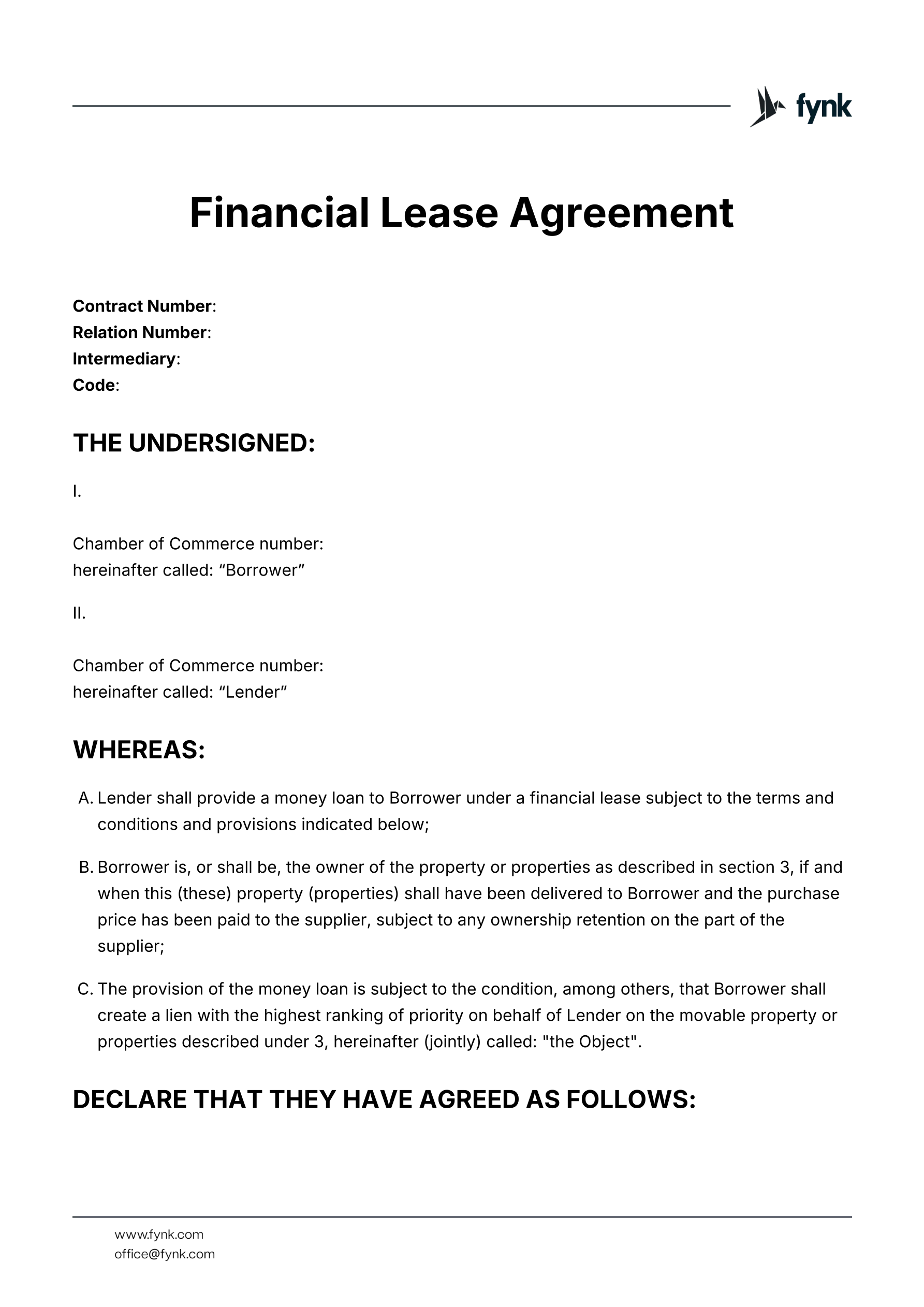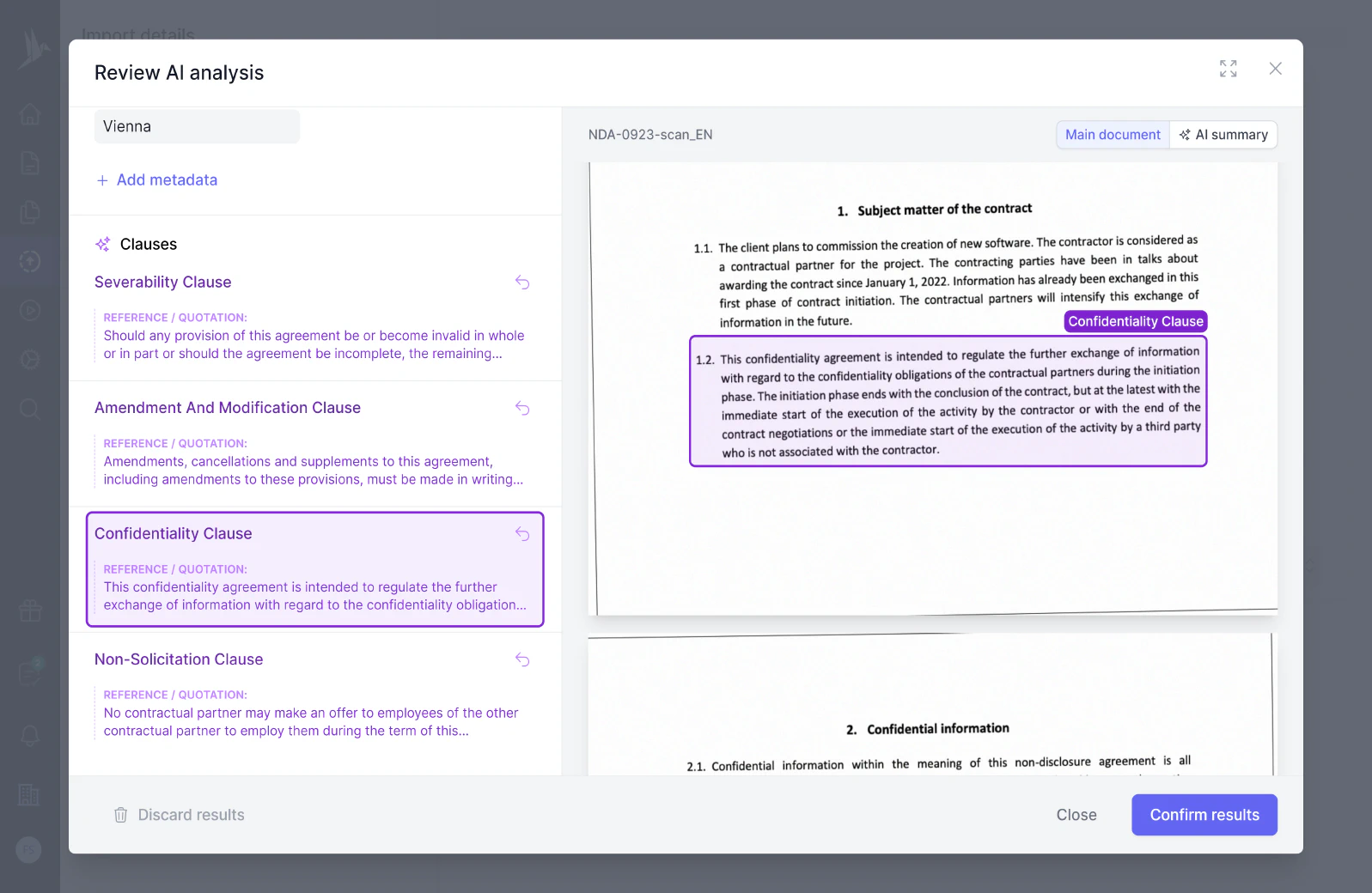
Financial Lease Agreement Template
A detailed financial lease agreement template that sets out loan terms, repayment schedules, security interests, and obligations of both lender and client.
A cross default clause is a provision in a loan or credit agreement that triggers a default if the borrower defaults on another obligation, such as a different loan or financial agreement. This clause aims to protect lenders by ensuring they can take action if the borrower is experiencing broader financial difficulties.
Further, as previously disclosed, the Company’s failure to make the interest payments on the Notes due on February 1, 2024 constituted an event of default (the “1.0L Cross Default”) under that certain First Lien Credit Agreement (the “1.0L Credit Agreement”), dated as of May 15, 2023, among the Company, the subsidiary guarantors party thereto, the lenders party thereto and Alter Domus (US) LLC, as administrative agent and collateral agent (the “Agent”). On February 2, 2024, the Required Lenders (as such term is defined in the 1.0L Credit Agreement) provided a waiver of, among other things, the 1.0L Cross Default through March 1, 2024, subject to certain conditions. On March 1, 2024, lenders holding more than 80% of the outstanding loans under the 1.0L Credit Agreement provided a waiver (the “1.0L Waiver”) of, among other things, (a) the 1.0L Cross Default, (b) any potential default arising from the Company’s potential failure to maintain liquidity equal to or greater than $75,000,000 as of February 29, 2024, (c) any potential cross default in connection with the Company's potential failure to satisfy certain minimum liquidity requirements and (d) any event of default arising from the failure of the Company to provide notice of the foregoing.
On March 9, 2022, the Company announced that it had entered into a First Amendment to the Second Forbearance and Seventh Amendment (the “First Amended Forbearance Agreement”) to the Credit Agreement with the Purchasing Lenders. By the First Amended Forbearance Agreement, the Purchasing Lenders agreed to waive, through and including April 4, 2022, a cross default that would have occurred under the Credit Agreement by virtue of ION’s missing, and still not having paid, the interest payment on the 2025 Notes that was due on December 15, 2021.
Dividends During a Cross Default or Failure to Redeem. Effective as of the date of a Cross Default or Failure to Redeem, and without duplication if more than one such event has occurred and is continuing at any time, dividends on each Series G Preferred Share shall be cumulative and shall accrue at the Dividend Rate from the date of the Cross Default or Failure to Redeem, whether or not such dividends shall have been declared, and whether or not there are profits, surplus, or other funds legally available for the payment of dividends. Holders of Series G Preferred Shares shall be entitled to receive dividends from time to time out of any assets of the Company legally available for the payment of dividends, when, as, and if declared by the Board of Directors. Dividends, to the extent declared to be paid by the Company in accordance with this Certificate of Designations and applicable Bermuda law, shall be paid quarterly on each Dividend Payment Date. Dividends shall accumulate during each Default Dividend Period, and dividends shall accrue on accumulated dividends at the Dividend Rate. If any Dividend Payment Date otherwise would fall on a date that is not a Business Day, declared dividends shall be paid on the immediately succeeding Business Day without the accumulation of additional dividends or interest. Dividends on the Series G Preferred Shares shall be payable based on a 360-day year consisting of twelve 30-day months. The Company shall promptly inform each Holder when a Cross Default or Failure to Redeem has occurred, and when such Cross Default or Failure to Redeem has ceased.
Dividend Rate. The Dividend Rate during any period, other than a Default Dividend Period, shall equal 0%. Except as otherwise provided in this Section 2(c), during any Default Dividend Period the “Dividend Rate” shall be equal to the Base Dividend Rate. Effective as of the date of the Cross Default or Failure to Redeem, and without duplication if more than one such event has occurred and is continuing at any time, the Dividend Rate shall be 1.25 times the Dividend Rate payable on the Series G Preferred Shares as of the close of business on the day immediately preceding the date of the Cross Default or Failure to Redeem, as applicable, and on each subsequent Dividend Payment Date, the Dividend Rate payable in respect of the succeeding quarter shall increase to a number that is 1.25 times the Dividend Rate as in effect as of the close of business on the day immediately preceding such Dividend Payment Date, until no Cross Default and Failure to Redeem exists. Notwithstanding the foregoing, in no event shall dividends accrue on the Series G Preferred Shares at a rate greater than 30% per annum. If a Cross Default and Failure to Redeem ceases to exist, the Dividend Rate payable on the Series G Preferred Shares shall be 0%, effective as of the date such Cross Default and Failure to Redeem ceases to exist (as evidenced by the delivery of an Officer’s Certificate by the Company to the Holders), and Section 2(a) shall apply. Section 2(a) shall not apply during a Cross Default or Failure to Redeem.
Cross Default Waiver. In accordance with Section 10.7 of the Note, Ginkgo hereby waives any Cross Default by the Company occurring or existing during the period beginning on March 31, 2020 and ending on the earlier of the day the Company receives cash proceeds from any private placement of its equity and/or equity-linked securities, and May 31, 2020 (inclusive), including any default or Event of Default resulting therefrom under the Note or the Partnership Agreement, including without limitation with respect to acceleration of any Partnership Payments pursuant to Section 4.3(d) of the Partnership Agreement.
Pursuant to Section 4(d) of the Note, certain cross defaults by the Company are considered an Event of Default (the “Cross Default”).
The Company has requested and Ginkgo has agreed, in consideration of and subject to the terms and conditions contained herein, to (i) waive any failure by the Company to make the April 2020 Payment prior to April 30, 2020, (ii) waive any failure by the Company to comply with the Reporting Covenant prior to the date hereof, and (iii) waive any Cross Default by the Company occurring or existing during the period beginning on March 31, 2020 and ending on the earlier of the day the Company receives cash proceeds from any private placement of its equity and/or equity-linked securities, and May 31, 2020.
In addition, and as further described below, the Company’s failure to make the interest payments on the Notes (as defined below) due on February 1, 2024 constituted an event of default under the 1.0L Credit Agreement (the “1.0L Cross Default” and, together with the Potential 1.0L Liquidity Event of Default, the “1.0L Events of Default”). On February 2, 2024, the Required Lenders (as such term is defined in the 1.0L Credit Agreement) provided a waiver of the 1.0L Events of Default through March 1, 2024, subject to certain conditions (the “1.0L Waiver”).
During the applicable Grace Periods, non-payment of the interest payments under the Notes does not constitute an event of default with respect to the Notes Indentures; however, the failure to make the interest payments in respect of the Notes would result in the 1.0L Cross Default under the 1.0L Credit Agreement, which was waived pursuant to the 1.0L Waiver, as further described above.
As a result of potential noncompliance with the respective liquidity covenants contained in the Company’s securitization facilities, each of which is described in the Company’s Quarterly Report on Form 10-Q filed with the Securities and Exchange Commission on November 2, 2023, events of default may occur under the Company’s securitization facilities. As a result of the failure to make the interest payments in respect of the Notes described above, defaults similar to the 1.0L Cross Default have occurred under certain of the Company’s securitization facilities.
Any failure of Maker or any of its affiliates at any time to perform any of the warranties, covenants or provisions contained or referred to in this Note, the Note Purchase Agreement, the Security Agreement, the Pledge Agreement (a “Cross Default”), provided, however, to the extent such Cross Default is capable of being cured, such Cross Default is not cured within 30 days after written notice of such Cross Default is delivered to Maker by Holder. Notwithstanding anything to the contrary contained herein, the remedy upon an uncured Cross Default shall be as set forth in Section 5(b) hereof.
Missing payment on the 2021 Notes did not result in any cross default on the Company’s outstanding indebtedness or its credit facility. Under the 2025 Notes, the Company had a 30-day grace period to cure missed interest payments.
Cross Default and Co-Terminus Provisions Team Sledd’s three notes payable and the Team Sledd Facility contain cross default provisions. The Henry’s note payable and the Henry’s Facility contain cross default provisions. There were no such cross defaults for either Team Sledd or Henry’s at December 2023. Additionally, the Team Sledd Facility and the Henry’s Facility are non-recourse to AMCON Distributing Company, are not guaranteed by AMCON Distributing Company and have no cross default provisions applicable to AMCON Distributing Company. The Company and its subsidiaries, including Team Sledd and Henry’s, were in compliance with all of the financial covenants under the respective Facilities at December 2023.
Cross Default and Co-Terminus Provisions Team Sledd’s three notes payable and the Team Sledd Facility contain cross default provisions. The Henry’s note payable and the Henry’s Facility contain cross default provisions. There were no such cross defaults for either Team Sledd or Henry’s at December 2023. Additionally, the Team Sledd Facility and the Henry’s Facility are non-recourse to AMCON Distributing Company, are not guaranteed by AMCON Distributing Company and have no cross default provisions applicable to AMCON Distributing Company. The Company and its subsidiaries, including Team Sledd and Henry’s, were in compliance with all of the financial covenants under the Facilities at December 2023.
On September 6, 2019, the Company received a notice of default under its senior secured credit facility with TCA, for non-payment of amounts due among other matters. Left uncured the default remedies include seizure of operating assets such as the Company’s subsidiary. Additionally, the default may trigger cross default provisions under other agreements with other creditors.
(ii) The Borrower shall promptly provide the Bank with the following upon its occurrence: a. Details of any material litigation, arbitration or administrative proceedings; and b. Notice of any event of default or cross default.
Cross default is a provision in a loan agreement or other financial contract that triggers a default if the borrower defaults on another obligation. This clause is designed to protect lenders by ensuring that if a borrower becomes unable to meet its obligations on one loan, all other loans may also be considered in default. This can allow lenders to take appropriate actions to limit their risk exposure.
Cross default provisions are typically used in lending situations where the lender needs to mitigate the risk of default across multiple financial obligations. If a borrower has several loans or credit agreements, a cross default clause ensures that a failure to pay one obligation can constitute a default on others. This can be important for lenders who want to ensure that they have remedies available if the financial health of the borrower deteriorates.
To write a cross default clause, it should clearly specify the triggers for the cross default event, including:
Example:
“A default under any material indebtedness of the Borrower or any of its subsidiaries, whether such indebtedness now exists or is hereafter created, shall constitute an Event of Default under this Agreement.”
Cross default clauses are commonly found in various financial contracts, such as:
These templates contain the clause you just read about.

A detailed financial lease agreement template that sets out loan terms, repayment schedules, security interests, and obligations of both lender and client.

Establish clear terms for buying or selling mortgage- and asset-backed securities on a forward basis under one master agreement.

A customizable unsecured loan agreement template outlining loan terms, repayment conditions, interest rates, default provisions, and dispute resolution.
Dive deeper into the world of clauses and learn more about these other clauses that are used in real contracts.
A cross indemnity clause is a contractual agreement where each party agrees to indemnify, or compensate, the other for specified types of losses or damages arising from their own actions or negligence. This mutual arrangement ensures that each party bears responsibility for risks or liabilities that stem from their conduct, rather than shifting the burden onto the other party.
The "Cumulative Rights" clause ensures that the rights and remedies outlined in a contract are in addition to, and do not replace or limit, other rights and remedies provided by law. This allows parties to pursue multiple avenues for addressing breaches or enforcing terms, without being restricted to the options specified in the contract.
A cure period clause provides a specific timeframe within which a party in breach of a contract can rectify or "cure" the breach to avoid further legal consequences, such as termination of the agreement. This clause offers a structured opportunity to remedy non-compliance, thereby maintaining the contractual relationship and reducing potential disputes.
Try our AI contract analysis and extract important clauses and information from existing contracts.
< <
Fill out the form and we will get in touch with you to give you a personal, customized demo of fynk.
Greetings!
I'm Markus, co-founder of fynk. After you've submitted the form, I'll swiftly get in touch with you.
Also, right after you submit your details, you can pick a time that works best for you for our meeting.

